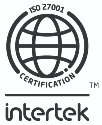How to Unlock the Most Value from your Digital Transformation

Modernizing existing systems goes beyond updating technology. It involves reshaping business processes, addressing organizational culture, and fostering a mindset of continuous improvement and innovation.
Drawing on over 30 years of experience, INSTANDA’s Business Development Director, Andy Watts, shares how adopting a Benefits Realization approach can help ensure digital transformation programs deliver tangible financial, operational, and strategic objectives.
The Essence of Benefits Realization
Benefits Realization is a systematic process that helps organizations – in this case insurance companies – identify, plan, manage, and measure the benefits provided by digital investments. The approach helps make sure projects are completed on time and within budget and achieve the intended outcomes justifying the investment in the first place.
For insurance companies operating in a sector characterized by complex regulations, products, systems and processes, the approach is particularly impactful. It provides a framework for ensuring digital transformation initiatives directly contribute to enhanced customer experience, improved risk assessment, streamlined operations, and ultimately, better financial performance.
Key Components of a Successful Strategy
Clear Identification of Benefits
The first step is to clearly define what success looks like. Develop a clear vision of the desired outcomes and identify the dependencies and key success factors critical to achieving them. This could range from realizing faster claims processing times to improving customer satisfaction or reducing operational costs through automation.
Alignment with Strategic Objectives
Digital transformation efforts must closely align with the overall strategic goals of the business to maximize the value of IT investment. This ensures that IT initiatives are not operating in a vacuum but contribute to the broader business objectives, such as market expansion, product innovation, or operational excellence.
Robust Implementation Planning
Implementing digital transformation projects requires meticulous planning, encompassing everything from technology selection and integration to change management. A key part of planning involves establishing metrics and KPIs to measure the attainment of benefits over time.
Ongoing Measurement and Adaptation
Benefits Realization is not a one-time task, but an iterative process. Performance of digital initiatives against the expected outcomes must be continuously monitored. Crucially, there must also be enough flexibility within the existing strategy to respond to changing market dynamics, customer needs, and technological advancements.
Stakeholder Engagement
Finally, realizing the benefits of digital transformation requires buy-in across the organization. This includes not only the C-suite, but also employees and brokers using newly introduced technologies and processes. Effective communication and training are critical to ensuring that everyone is aligned with the digital transformation goals and equipped to contribute to its success.
Role of the Center of Excellence
The role of the Executive Sponsor and Center of Excellence (CoE) in insurance digital transformation is critical.
A CoE is a specialized hub within an insurance organization. It brings together key executives who work together to drive innovation, best practices, and continuous improvement across various functions such as customer service, underwriting, and claims management. As INSTANDA covered in its Center of Excellence whitepaper, the CoE takes a results-driven approach, ensuring that initiatives are not only innovative and compliant but also align with the organization's strategic goals.
After all, successful digital transformation requires more than just the deployment of modern technology; it demands cultural shift and cross-functional acceptance. The CoE actively involves key people in defining the expected business benefits, thus ensuring broader acceptance and commitment to the change process.
Crucially, the CoE utilizes Benefits Realization to manage this change, anticipating challenges, mitigating risks, and ensuring the implementation team remains flexible and responsive to evolving market demands.
Most importantly, at the heart of this approach is Agile working for the benefit of the business. By leveraging Agile practices, insurance companies can rapidly design, launch, test and iterate on insurance products and services based on customer feedback. This iterative process ensures the product is closely aligned with customer needs and expectations, enhancing satisfaction and loyalty.
The Benefit of INSTANDA
INSTANDA, of course, goes hand-in-glove with this approach. As we explore in our comprehensive guide to ‘Navigating Innovation in a Legacy Landscape,’ INSTANDA empowers insurers to rapidly bring products to market, freely make changes, and overcome the prolonged and capital-intensive overhaul associated with core system modernization.
With INSTANDA, product design and distribution cycle times are typically five to ten times faster than a legacy equivalent, and implementation costs significantly lower than typical policy administration systems. This agility accelerates time-to-market and enhances ROI – two key measures of any Benefits Realization approach.
To learn more about INSTANDA’s capabilities and to find out why insurers, MGAs and brokers across the world choose us as their technology partner, see the system in action.





